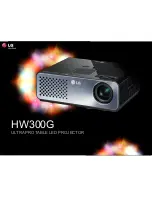
Parallel Connection
This is a Parallel connected SPD – not series connected. As outlined
previously, an SPD ‘drains off’ excessive voltage from an electrical
system. Because of parallel connection, installation of the SPD
reasonably near the equipment to be protected is satisfactory.
Tip: It is very important that wiring leads be configured as
short & straight as possible. Avoid long leads. Avoid sharp
bends. Route SPD conductors in the same conduit. Leads do
not have to be sized for the entire load – this SPD is parallel
connected, not series connected. As a generalization, 6
AWG is satisfactory.
Precautionary Statement Regarding SPDs on Ungrounded Systems
Caution – Ungrounded systems are inherently unstable and can
product excessively high line-to-ground voltages during certain fault
conditions. During these fault conditions, any electrical equipment
including an SPD, may be subjected to voltages which exceed their
designed ratings. This information is being provided to the user so
that an informed decision can be made before installing any electrical
equipment on an ungrounded power system.
Cascade Surge Protection
For optimum surge protection, cascade or staged surge suppression
should be implemented at the service entrance and downstream
locations as appropriate. Known or expected surge sources, as well
as sensitive loads, should also have localized surge suppression. For
interconnected electronic loads (data cabling), SPDs should also be
utilized to protect the devices on either end of the interconnecting
data cables.
Unpacking & Preliminary Inspection
Inspect the entire shipping container for damage or signs of
mishandling. Remove the packing materials and further inspect the
unit for any obvious shipping damages.
If any damage was found and is a result of shipping or handling,
immediately file a claim with the shipping company and forward a
copy to Siemens TPS Tech Support.
A
B
C
G
N
BREAKER
Figure 2: Typical Parallel Connected SPD on Electrical Panel
To Protected Loads
Pre-Installation and Planning
Operating Environment
The standard unit uses a Type 1/12/3R/4 enclosure. Non-metallic
polycarbonate 4X, stainless steel and Type 1 flush-mount or pull box
enclosures are available as options. Before installing, ensure that
your enclosure type and application are appropriate per NEMA 250
with regard to moisture, dirt, excessive dust, flammable materials or
atmospheres, corrosive vapors, etc. Please consult factory if enclosure
needs changed.
This SPD is designed to operate in an ambient temperature range of
-40°C (-40°F) to +60°C (+140°F) with a relative humidity of 0% to 95%
(non-condensing). Excessive temperature may inadvertently operate
internal thermal overtemperature protectors.
On rare occasions in high temperature climates, SPDs inside clear-cover
polycabonate enclosures have experienced internal temperatures
exceeding 200°F (94°C). We recommend positioning the unit so
that the clear front avoids direct summer sunlight by shading or not
facing west.
Line Side versus Load Side Installation
The TPS3 12 & TPS3 15 family SPDs are tested and qualified as Type 1
SPDs per UL 1449 Third Edition and 2008 NEC. This SPD can be installed
on the Line Side of the service overcurrent device per 2008 NEC Article
285. Type 1 SPDs may also be installed in Type 2 applications. As a
generalization, it is more practical to install as Type 2 on load side of
main overcurrent device for maintenance reasons. Such installations
would be similar to traditional SPD installations. (Note: cUL models
are Type 2 due to different cUL criteria.)
There may be circumstances where Line Side installation is desirable.
Follow all applicable Code requirements for Line Side installation. We
generally recommend that the SPD be installed with a disconnecting
mechanism for servicing purposes.
Tip: Siemens TPS offers an optional Disconnect Switch that
has been UL evaluated as part of the SPD. This includes SCCR
and Line Side suitability. If you do not use the disconnect
option, select a disconnect switch rated for line side (UL
98) having appropriate SCCR rating including any required
overcurrent protection. This may be more time consuming
and expensive than anticipated. The optional Disconnect
Switch is fully engineered and almost certainly easier, smaller
and less expensive. Please contact Siemens TPS Tech Support
as appropriate.
Audible Noise
SPD background noise is negligible or non-existent, and does not
restrict the location of installation.
Mounting, Dimensions, and Weight
The TPS3 12 & TPS3 15 series include enclosures and are intended for
wall mounting. See Table 2 for details.
4


































